The Directors’ Fortnights at the Cannes Film Festival was established in 1969 as an alternative to the official selection, as a way of opening the door to “free and adventurous cinema” (per its program guide) and promoting new directors. It has since become a showcase for the up-and-coming, spotlighting Martin Scorsese, Michael Haneke, Werner Herzog, Jim Jarmusch, and Spike Lee, among a long list of those who now form the bedrock of art-house cinema. So it was surprising to see more genre films in this traditionally auteur-oriented sidebar. (It literally rains blood in the American crime thriller Cold in July.) The sensitive and the pensive were outnumbered and outgunned by more feisty fare that barely budged from the conventional.
An all-out, over-the-top bad cop vs. bad cop Korean thriller, the devious A Hard Day, was entirely welcomed by the audience. It has an attention-getting beginning, and its lickety-split pace never flags. For that alone it stood out from any number of films at the festival, and the applause it garnered during the final credits was more enthusiastic than the typical polite reception.
The title is more than appropriate for its lead dirty cop, for whom very little is sacred. Somewhat tipsy, detective Gun-su (movie star Lee Sun-kyun) leaves his mother’s funeral on his way to the office, where internal affairs is investigating him and his cohorts for corruption. Driving too fast, he almost hits a dog in the road but swerves and misses it, in perhaps the single act of selflessness that makes the character likable, despite the many crimes he’ll commit not to get arrested.
Though Gun-su avoids the dog, he drives over something else—thump—and a man lies dead on the road. The cop speeds off but is eventually pulled over for suspicion of drunk driving. Because he has a higher rank than the rookie, by-the-book officers who detains him, Gun-su is free to go but not before one newbie notices the cracked windshield. All this takes place within the first few minutes.
The story line follows its own jerry-rigged inner logic, where coincidences are the norm. Director Kim Seong-hun piles dilemmas on top of Gun-su, and if you scrutinize the plot even slightly, it falls apart. Yet no matter how ludicrously superhuman Gun-su appears, the audience will believe his desperation. At times, the movie plays out like a silent comedy, with many ingeniously crafted action scenes. The director takes full advantage of the widescreen frame; the viewer won’t know what will pop up or come crashing down in the background.
A dystopian drama from down under, These Final Hours ventures upon some of the same ground, plot wise, as Seeking a Friend for the End of the World, the abysmal romantic comedy with Steve Carell and Keira Knightley (one of the oddest of recent pairings). However, it takes the end-of-the-world mayhem deadly seriously, and its hard-edged tone obliterates comparisons. If the more hopeful Friend was a valentine to the best of human instincts, then Hours is one self-anesthetized booze and coke-fueled bender. The behavior of the doomed residents of Perth runs the gamut from people praying on the streets to copulating out in the open. Most search for the final blowout, sex and drugs not optional.
The reason for Earth’s demise isn’t quite explained. In the beginning, Western Europe has already been destroyed. Our antihero, two-timing James, abandons his girlfriend to head for his sister’s house. Along the way, he saves a 10-year-old girl from rape and agrees to take her to her dad’s on a low-budget road trip through the apocalypse, with a stop at a poolside bacchanal. There, James’s other girlfriend shows him a secret shelter with a coveted supply of food and water.
The movie faithfully follows a formula for James’s redemption, but what sets it apart from so many action-oriented films is that the director surrounds lead actor Nathan Philips with a strong, multigenerational cast of women, each given a moment in the spotlight. James’s neon blue bikini–clad girlfriend Vicky (Kathryn Beck) defies the stereotype of the blond, uninhibited party girl, and she’s given a compelling breakdown scene. And Philips is no slouch himself. He has the appropriately rugged looks of an action hero, and he can act the pants off many of his compatriots who have gone Hollywood.
One must-see for animation fans, especially of the Ghibli Studio, is the gorgeous The Tale of Princess Kaguya, directed by the company’s co-founder Isao Takahata, whose films haven’t received as much attention in the United States as his those of his counterpart and Ghibli cofounder, Hayao Miyazaki. He’s certainly a filmmaker to know.
Takahata takes his inspiration from a classic Japanese tale. In the humblest of births, a tiny princess sprouts to life from a bamboo stalk and is raised by a loving, elderly rustic couple. They immediately recognize she’s a supernaturally born royal, and their adopted daughter grows by leaps and bounds. Her parents strive to raise her properly, grooming her to become the wife of a prince. Indeed, many royal suitors contend for her hand once word spreads of her beauty and skill with the stringed koto. In the requisite makeover scene, Kaguya’s teeth are blackened and her eyebrows painfully plucked. Nevertheless, she’s just as rebellious and independent as any Disney heroine.
This is one of the most gorgeous animated films of the last decade (France’s The Painting and Pixar’s Brave come to mind as well), with soft pastels against a white background and bolder colors for the palace intrigue. The musical score features an oboe solo evoking Wagner’s “Forest Murmurs,” fitting for this film’s alluring call to nature. The visual variety is a treat for adults, but the methodical pace and the long running time (137 minutes) places this out of the patience zone for most kids, even with the appearance of an angry dragon.
For the third year in a row, Mads Mikkelsen has come to Cannes, starring as an inherently decent everyman pushed to his violent limits by the powers that be. He won the best actor award here for the punishing The Hunt in 2012, and he went on a rampage against the aristocracy during the French Reformation in The Age of Upraising: The Legend of Michael Kohlhaas last year. Now he’s a Danish immigrant taking up arms in the Old West as the titular and taciturn hero of The Salvation, rescuing a dusty town from a gang of greedy thugs headed by Jeffrey Dean Morgan. It screened out of competition but would have been right at home in the Directors’ Fortnight.
Director Kristian Levring returns the western to the venal and violent 1960s variety: the film has more in common with Peckinpah’s The Wild Bunch than Ford’s Stagecoach, except for the vistas. Shot in South Africa with a CGI Monument Valley in the background, the color palette has the overly deep yellows of a faded Technicolor spaghetti western, and that isn’t the only similarity this rowdy film shares with that subgenre. (It was perhaps then fitting that the festival closed with the newly restored A Fistful of Dollars.)
The bloodshed begins as soon as Jon (Mikkelsen) is reunited with his beautiful, blonde wife and his son, whom he hasn’t seen since he left Denmark seven years earlier after the war with Germany. Woe to any actress who plays Mikkelsen’s onscreen spouse. Don’t expect her in the last reel (as in The Age of Upraising). But Jon’s personal loss is consumed by the routine “tooth for a tooth” (as it’s called here) retaliation, which leads to a showdown on a deserted street. It’s Death Wish, circa 1871, but Mikkelsen plays the role stoically, almost robotically, as though he’s emulating the too-cool-to-be-killed emo from Ryan Gosling in Drive and Only God Forgives.
The film’s real savior is Eva Green, who has embraced her inner femme fatale more so than any actress of her generation. This is not the first time that she has single-handedly energized a movie. She fittingly plays Princess, the wife of one of Jon’s first victims. She had her tongue cut off by Indians years earlier and has a tattoo of a double cross under her right eye. Like a star of the silent era, her performance lies truthfully in her eyes. Mikkelsen becomes a background player next to Green; he withholds, she combusts.
The Directors’ Fortnight gives out its own awards, and for the first time in its history, its juries over-generously gave the three top prizes to one film, the rambling boot camp?set romcom Les Combattants. Besides the honor of best film, the awards include aid in its distribution in Europe and abroad. Though amicable and funny, it might disappoint those expecting a film more ambitious and layered based on the praise of the jury. It is, however, a tribute to the French-made star vehicle, featuring two very good-looking, charismatic new stars, Kévin Azaïs and Adèle Haenel.
The film’s English title, Love at First Fight, is an accurate translation. Arnaud and Madeleine don’t exactly meet cute but rather, strangely, as opponents in a wrestling match during an army recruitment workshop. She almost takes him down, but he avoids this humiliation by biting her and winning the match.
Despite his poor sportsmanship, Arnaud is instantly likable. Early on, he insists on nothing but the best coffin for his deceased father, even if he, the good son, has to make it himself. He’s a landscaper by trade, and Madeleine is from middle-class suburbia. In a strained coincidence, Arnaud and his brother are hired to build a cabana by the parents of—guess who?—the determined and unsentimental Madeleine, and she hasn’t forgotten or forgiven the bite. At the least, Thomas Cailley’s film builds suspense by withholding the long and sloppy kisses till the end.
This is the second year in a row that a French comedy has won the top prize in the Directors’ Fortnight. Last year, it was for the autobiographical Me, Myself and Mum, with its great drag performance by Guillaume Gallienne. Sadly, it hasn’t been released yet in the United States. Although the entire program has an international focus, it’s important to remember that Cannes is the biggest media event in France to launch films. Maybe Les Combattants had the homegrown advantage.

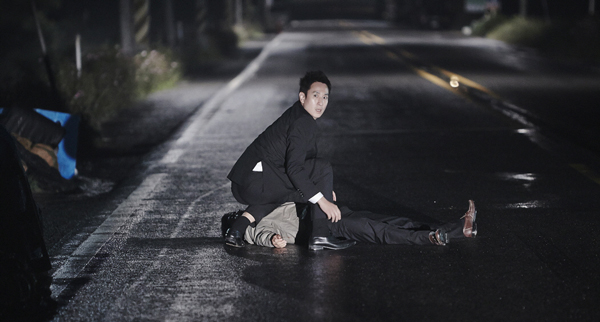
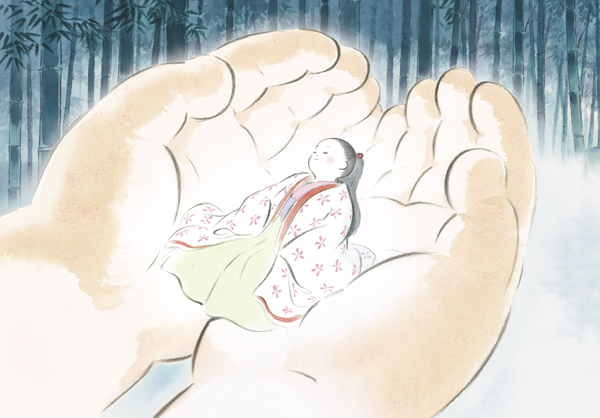
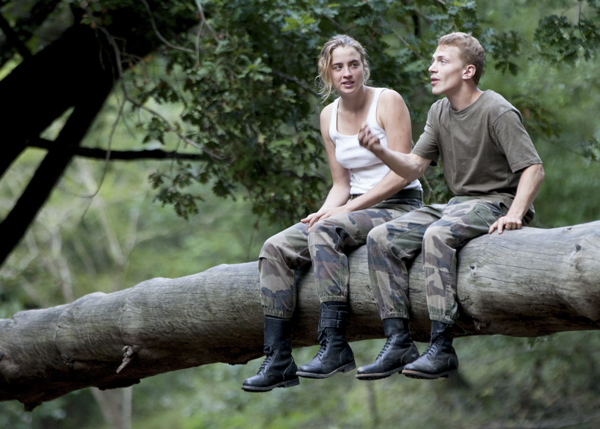
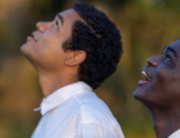

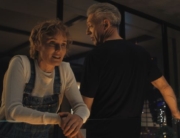
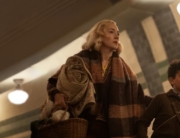

Leave A Comment